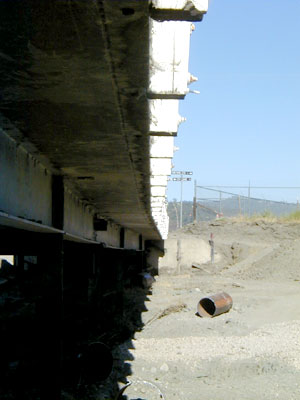The June 8, 1934 Parkfield earthquake poses several curious questions. Why did the timing of the 1934 shock violate the otherwise regular intermittent spacing of 21-22 years? Moreover, is the "early" occurrence of the 1934 shock, 12 years early according to a simple model, related to the pronounced foreshock activity that occurred in 1934? Clearly the 1934 foreshocks are dramatic, with two magnitude 5 shocks and 13 felt and/or located magnitude 3-4 shocks in the 67 hours before the 1934 main shock. All of the well-located foreshocks were on the San Andreas fault just to the northwest of the main shock epicenter. One of the magnitude 5 foreshocks occurred 17 minutes before the main shock.
The epicenter of the 1934 main shock is located on Middle Mountain, about 9 kilometers northwest of Parkfield. All of the well-located aftershocks were on the fault southeast of the main shock epicenter, suggesting that fault rupture during the main shock progressed from the northwest toward the southeast. Although the southeast end of the rupture is unknown, no located aftershocks occurred southeast of the offset in the fault trace that is located a few kilometers southeast of Gold Hill. A curious feature of the 1934 main shock is the pronounced difference in local magnitude (ML) obtained from recordings in southern and northern California. The magnitude assigned by Richter and his colleagues at The California Institute of Technology (CIT) using southern California recordings is 6.0. In contrast, comparable recordings at seismographic stations operated in northern California by the University of California at Berkeley (UCB) imply an ML of 5.0. One explanation for this discrepancy is the southeast direction of rupture propagation suggested by the location of the aftershocks to the southeast of the main shock epicenter. Southeastward rupture should result in larger 1-second-period waves in southern California than in northern California, consistent with the measurements on which the ML estimates for the 1934 main shock are based. Note that the appropriate ML estimate is an average over stations surrounding the epicenter so that the ML for the 1934 main shock is about 5 and 1/2, rather than the 6 estimate by CIT that is often quoted. Because the surface waves generated by the 1934 main shock are nearly identical to those generated in 1922 and in 1966, the surface-wave magnitudes for the 1922, 1934 and 1966 main shocks are all about 6.


 Jump to Navigation
Jump to Navigation